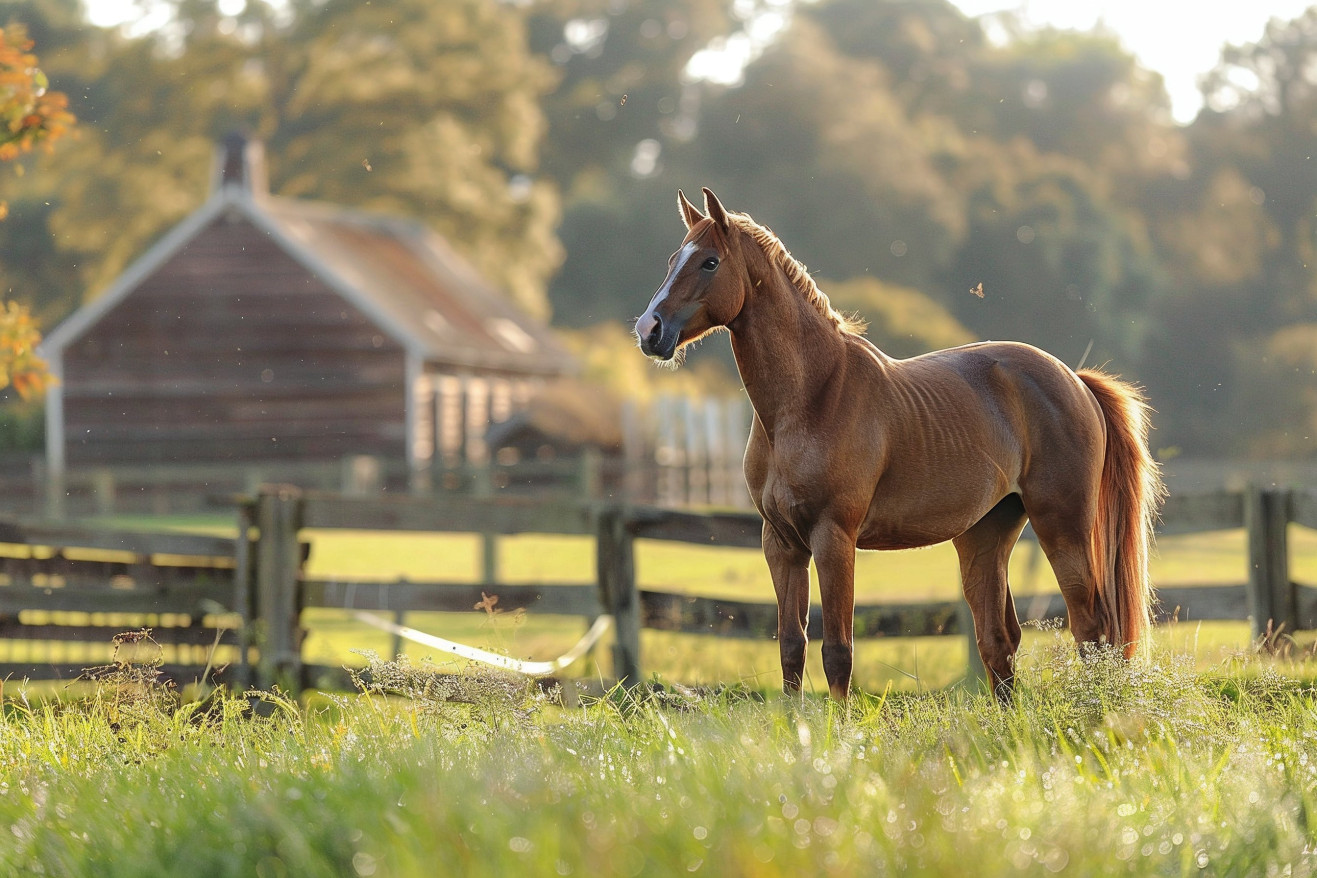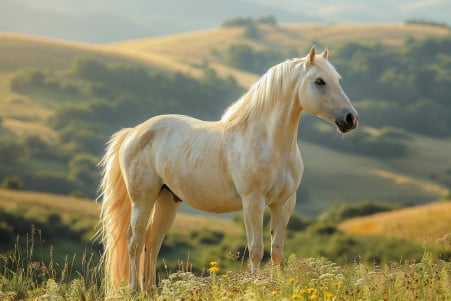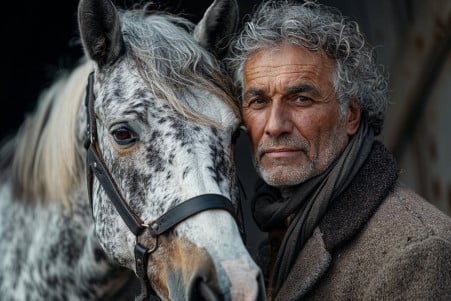How Long Are Horses Pregnant? An Explanation of the Mare Gestation Period
22 April 2024 • Updated 22 April 2024

If you've ever wondered how long a mare's pregnancy really is and what determines the length of the gestation period, you've come to the right place. On average, horses are pregnant for 11 to 12 months, or approximately 320 to 370 days, although the range can be as short as 315 days or as long as 420 days. The length of gestation is affected by the mare's age, breed, nutrition, and other environmental factors.
We will explore in-depth research from equine reproductive science that details the physiological changes that occur during horse pregnancies. This research-based overview will detail mare reproductive cycles, embryonic and fetal growth, and the biological factors that veterinarians consider when determining the most accurate foaling dates. By the time you're done, you'll know the ins and outs of a mare's gestation period, the important milestones, and the things that contribute to a healthy, full-term pregnancy for both the mare and the foal.
How long are horses pregnant?
Phases of Horse Pregnancy: Embryonic and Fetal Development
Horse pregnancy is broken into three trimesters, each of which is important for the development of the fetus. The first trimester, which takes place between days 26-90, is when the embryo is formed and the fetus' heartbeat can be seen on an ultrasound.
The second trimester starts at about 114 days or 4 months, and is a time of rapid growth and development for the fetus inside the mare. The third and final trimester starts at about 226 days or 6 months, and is when the fetus continues to grow and get ready for birth.
It's important to keep a close eye on each of these phases to make sure the mare is getting the right care and nutrition to support the fetus. Knowing these phases also helps horse owners and veterinarians catch any potential problems early and take steps to make sure the pregnancy goes to term and the foal is born healthy. If you're able to do this, the chances of a successful foaling are much higher.
Signs of Impending Foaling: What to Look For
In the days leading up to foaling, the mare will show a number of physical and behavioral signs that can help you determine when she is likely to give birth. According to Ranvet, one of the first signs is the swelling and filling of the mare's udder, which can even change throughout the day, filling at night and emptying during the day, as the time of foaling gets closer. The AAEP also explains that the mare's vulva and pelvic ligaments will start to relax and that the tailhead will become more prominent in the days leading up to foaling.
Other signs include the teats "waxing," which is when a yellow, honey-like substance appears one to four days before foaling, and the relaxation and swelling of the vulva in the last 24-48 hours. Avonvale Equine Vets adds that mares may also show behavioral signs like restlessness, irritability, and colic signs as they get closer to labor.
By paying close attention to these signs, horse owners and caretakers can better predict when the mare is likely to foal, which can help them prepare and be present to assist during the birthing process. However, as The Horse points out, it's important to know the average time frame for these signs and when they might occur earlier or later than expected to ensure a safe and successful foaling experience.
The Foaling Process: Labor, Delivery, and Aftercare
The three stages of labor in mares are contractions, foaling, and placental expulsion. The first stage, which is the contraction phase that dilates the cervix, can last 1-2 hours, according to the AAEP. The second stage, which is the foaling phase, should take less than 30 minutes if the foaling process is progressing normally. Mad Barn describes the normal presentation of the foal as a diving position, with the front feet coming first, one slightly ahead of the other, and hooves down, followed immediately by the nose, head, neck, shoulders and hindquarters.
The third stage, which is the placental expulsion phase, should occur within 1-3 hours after the foal is born, according to the AAEP. Proper monitoring and assistance during foaling, as well as aftercare for both mare and foal, are essential for a successful outcome. Oklahoma State University stresses the importance of having a veterinarian check the mare and foal within 24 hours of the foal's birth to make sure they are healthy and thriving.
Other Factors That Impact Gestation Length and Complications
There are many other factors that can impact the length of a mare's pregnancy, including maternal age, parity, and the sex of the foal. A literature review on factors affecting gestation length found that maternal age, parity, and the sex of the foal were all factors that impacted the length of gestation.
Environmental factors, including temperature, humidity, and photoperiod, can also impact gestation length. A study found that mares that were pregnant during a period of lower photoperiod had longer gestation lengths. In addition, the Equine Institute says that horses bred in more natural, stress-free environments have a more predictable gestation period than those bred in more extreme weather conditions.
Mares bred in the spring also have shorter gestations, while mares bred in the fall have longer gestations. A PubMed study found that foals born in January had the shortest gestation lengths, while those born in April had the longest.
Complications, such as retained placenta or premature birth, can also be related to gestation length. It's important to be aware of these factors and look out for potential complications to ensure a healthy pregnancy and successful foaling.
Nutritional Management for Pregnant Mares: What to Feed
Optimal nutrition is important for the health of the mare and the developing fetus during pregnancy. Kentucky Equine Research states that mares should be kept in a moderate to moderately fleshy body condition for the duration of their pregnancy. Meanwhile, the University of Kentucky says that body condition is one of the most important factors that influence the reproductive efficiency of broodmares.
Mad Barn explains that the mare's diet should be based on high-quality forage, with additional nutrients provided by a fortified feed or balancer pellet. Meanwhile, the Scone Equine Hospital points out that even when mares are on pasture, they often don't get enough of the minerals, including calcium, phosphorus, copper, selenium, and vitamin E, that are important for the fetus's development.
Working with an equine nutritionist and keeping a close eye on the mare's body condition will help make sure that she's fed and her weight is managed properly throughout her pregnancy, as the AAEP suggests. This will make it easier to adjust the mare's diet, especially during the last trimester when her caloric and nutritional requirements will increase significantly.
Conclusion: How to Have a Healthy Horse Pregnancy
Knowing the average length of gestation and the factors that can affect it is important for managing horse pregnancies successfully. Keeping an eye on the mare's physical and behavioral changes can help predict when she will give birth and ensure that she can be there to help during labor and delivery.
Providing the right nutritional support and keeping the mare in good body condition is important for the mare and the fetus. Being aware of potential problems and working with a veterinarian can help make sure that the pregnancy and foaling process goes smoothly.
By providing the right care and making the right decisions, horse owners can help ensure that their mares have a healthy pregnancy that lasts the full term and that the mare and foal both have a safe delivery.


